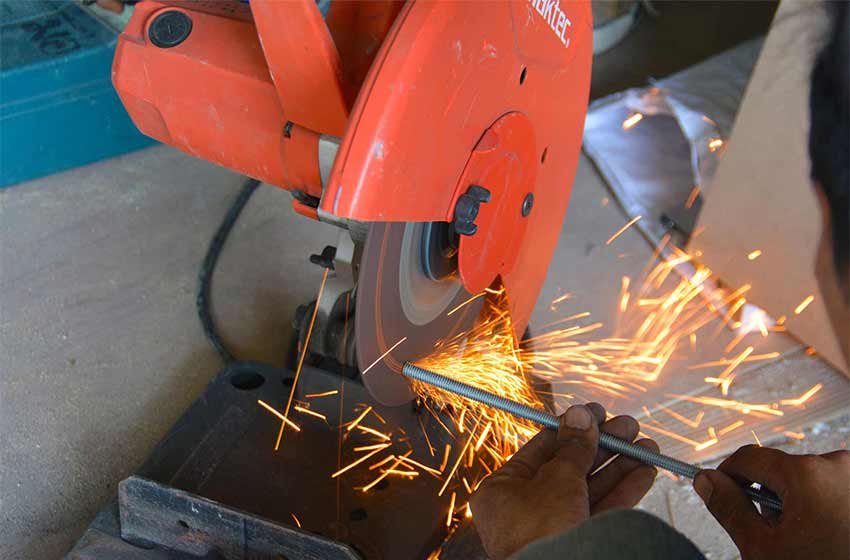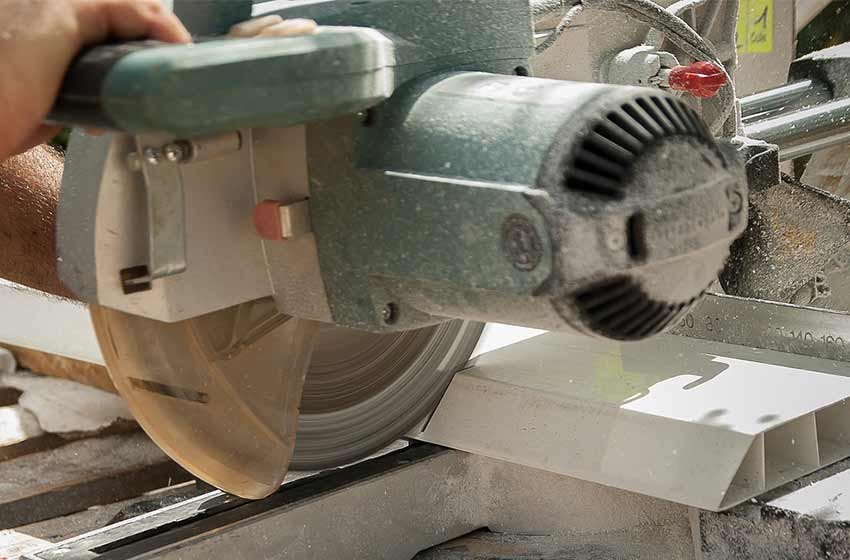Whilst rips, cross-cuts, and miter cuts might be the first functions that pop to mind when you think of a table saw, there are other things that a table saw can do and they should not be underestimated.
So, you’ve mastered the above-mentioned cut types, exhausted all the DIY projects that use them, and are looking for a new challenge? Or maybe you’re just trying to expand or improve your woodworking skillset to allow you to make better quality products?
Either way, learning how to do a taper cut on a table saw is just the thing to elevate your carpentry and subsequently, the elegance of your finished pieces.
Although the other kinds of cuts might be more quintessential when it comes to table saws, table saws are also very easily tailored to making taper cuts, so if you were looking for a sign to learn how to do them, this is it! Before you jump into learning the process though, it’s essential that you know what a taper cut is and what it can be used for.
What is a Taper Cut?
You probably know what a rip cut is and how ripping takes place. Understanding ripping is the first step in understanding taper cuts, because what a taper cut is, essentially, is a rip cut on an angle. Look at it this way:
Instead of ripping parallel to the board’s edges, you rip at a diagonal. Taper cuts usually run along the wood’s grain but less strictly than a rip cut, due to the angle.
A taper cut is like a rip cut’s eccentric cousin!
What are Taper Cuts Used For?
Taper cuts are essential for many different furniture parts, and the style of the finished piece will determine the severity of the taper.
Some of the most commonly tapered furniture components are table and chair legs. Humble though these parts might be, carrying comfy chair seats and sleek table-tops, their appearance doesn’t always have to be static and blocky, which is where tapering comes in.
Instead of using squared planks and boards for all furniture legs, many designers and woodworkers create tapered styles that lend an added air of sophistication and elegance to the finished pieces. No interior designer is going to be inspired by table legs that look like 2 x 4 milled lumber. A minimalist coffee table with tastefully tapered legs, on the other hand? Priceless!
(image of a modern coffee table with tapered legs)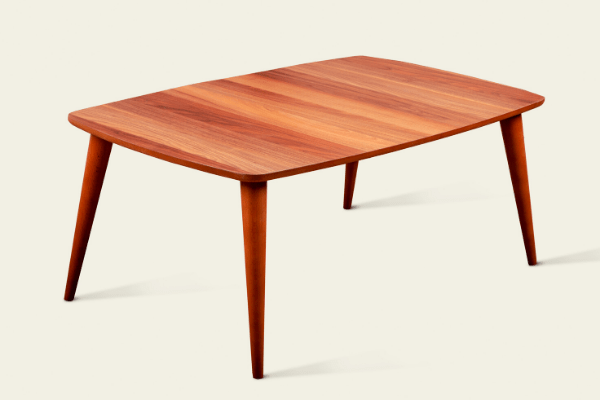
Taper cuts can also be used to fashion parts for many other furnishings; table and chair legs are certainly not the end-all and be-all.
How to Cut a Taper with Your Table Saw
Now we move onto the fun stuff: how to use your table saw to make tapered cuts. It’s actually quite a simple and cheap process, here goes!
You’ll need to work with a flat board, preferably with straight edges to make your life easier, and before you start cutting, don’t forget to suit up with protective gloves and eyewear. You should ideally be working in a well-ventilated area too.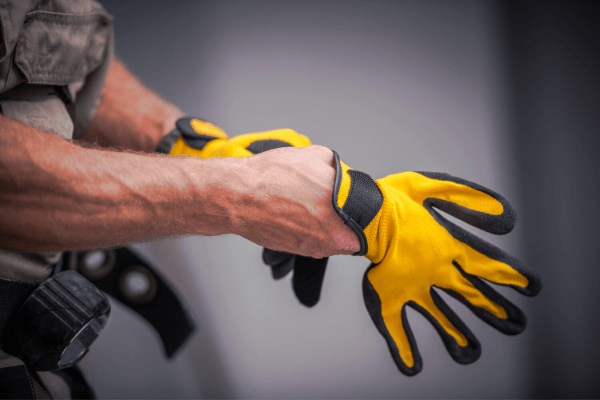
Because you’re likely going to be cutting slightly across the grain of the wood (not entirely perpendicular like a cross-cut, but more angled than a classic rip), it is vital that you use a sharp blade as thin as you can get it without compromising blade stability.
Once you’ve got your blade set up, here are the steps you’ll need to follow:
- First of all, measure and mark where you want your taper to be. This includes measuring the angle you want your taper to be at and elongating the line so that it spans the whole piece of wood, giving you a guide for where to cut.
- You might also want to draw in a second line to mark where the kerf will be, as this will help you to get optimal accuracy and precision.
What you should be left with after this stage is two straight, parallel lines really close to one another, running along the wood where you want your taper to be. The distance between the two lines will depend on the kerf width of the blade you decide to use.
- Make sure you’re clear on which side of the wood is going to be the usable side and which is going to be discarded.
- When you’ve got your taper and your discard sides clear in your mind, take another board preferably made of plywood or other scrap and fix it to the discard side of the line you’ve marked. This will be your guide board.
- You can fix your guide board to your discard side by nailing or screwing them together in at least two places to keep the boards from slipping. Try to damage the discard wood as little as possible in case you want to use it for something else.
(image of a guide board attached to a piece of wood)
The guide board should be at least as wide as the discard wood, and should ideally extend a couple of inches beyond the length of the board you’re going to cut. Before you fix it to your discard side, make sure it is perfectly lined up with the kerf line you have drawn.
- Make sure your boards are such that the guide board is on the table and the wood you want to cut is on top of it. If the guide board is on top of the wood you want to cut, simply flip the two boards over end to end.
- Adjust the table saw fence so that it is exactly the width of your guide board. This will ensure that the blade is lined up exactly with the kerf lines you drew and will therefore cut exactly where it should.
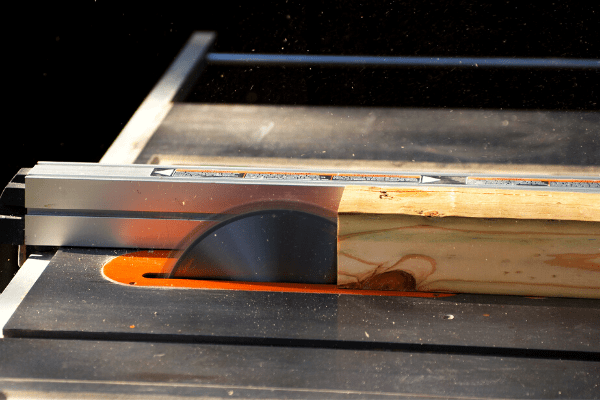
- Without further ado, you can now start cutting!
- Using steady pressure, push the board along the table to meet the saw blade and keep it moving forwards as the blade slices.
- When the blade gets through the whole cut, the taper will drop onto the table and you can separate the discard side and the guide board if you wish to reuse either of them.
You’ve now got your tapered part and can repeat the process as many times as necessary to get the number of tapered pieces you need for your project! The end product might be a little rough after the cutting process so depending on what you’re using it for, you might need to tidy up the edges a bit.
Refining Your Taper Cut
If you’re making parts for some sleek, polished furniture, the last thing you want is rough edges that look too homemade. Unfortunately, due to the nature of taper cuts, there might be some chipping or mill marks, although this should be minimal if you use a high-quality thin-kerf blade.
There are several tools you can utilise to help you clean up your edges:
- Jointer – make sure you feed the jointer slowly so that the clean-up is as thorough and careful as possible, minimising any other kinds of damage.
- Router – using a flush-trimming bit will ensure a close and smooth finish.
- Handplane – this tool gives you optimal control over the clean-up so that you can get the finished product to be as polished as you like.

That’s All Folks!
While there are several tools capable of executing a decent taper cut, the table saw is probably the most common power saw out there and due to its versatility, many people have them in their garages. If you’ve made it this far through this post, then it’s probably fair to assume you fall into this demographic.
Whether you’re looking for a way to expand your existing use of your table saw, or there’s a specific project you have in mind, taper cuts really open up the game.
Hopefully this guide will give you a good idea of how to go about using your table saw to cut a taper, and hopefully you’ll go on to make some fabulous furniture with this new skill!







